- Home
- Winston Groom
1942: The Year That Tried Men's Souls Page 16
1942: The Year That Tried Men's Souls Read online
Page 16
“How in hell could an experienced airman like you get caught with your planes on the ground! That’s what we sent you there for, to avoid just what happened!”
Brereton was trying to explain the situation to his boss when a fresh flight of Japanese fighters roared over and began strafing the base anew.
“What in the hell is going on there!” Arnold shouted.
“We are having visitors,” Brereton replied sourly.5
For the next week the Japanese continued to bomb and strafe airfields and other military facilities all over Luzon while American pilots made heroic but futile efforts to contain them. One B-17 pilot whose plane had been jumped by eighteen Japanese Zero fighters counted a thousand to fifteen hundred bullet holes in his fuselage, testimony at least to the durability of the big bombers. The massive navy base at Cavite, in sight of downtown Manila, was totally destroyed by an afternoon-long Japanese bombing attack as Admiral Hart “looked on in helpless rage.” Like Kimmel before him at Pearl Harbor, Hart was experiencing a fleet commander’s worst nightmare. Although most of the larger ships had already departed, submarines, oilers, seaplane tenders, tugs, barges, and other useful craft were ruined or damaged and the base itself with all its shops, stores, and warehouses was a complete loss. Most unfortunate was the destruction of several hundred torpedoes crated on the docks, almost the entire supply for the Far East command.6
After seven days of losses it had become painfully apparent that the Japanese had gained almost total control of the air above Luzon. Brereton had to keep his remaining bombers in the air during daylight hours just to prevent them from being wrecked on the ground by the Japanese. “It was a game of hide-and-seek that wore out men as well as planes,” was the way the agonized Brereton put it. Besides, there were simply no spare parts for any of the planes and no way to get any. It was finally decided to move most of the big planes to Darwin, Australia, fifteen hundred miles to the south, where at least they could be maintained.7
Thus MacArthur was left with no navy and no air force to contend with the rapacious Japanese, who were certainly preparing for an invasion. This was perhaps all the more galling because of MacArthur’s tight affiliations and genuine love for the Philippines and its people. His father, Arthur MacArthur, who had won the Congressional Medal of Honor in the Civil War, had been named military governor of the Philippines in 1900, when Douglas was still a West Point cadet. After graduation the young MacArthur quickly distinguished himself as a junior officer, serving in the Philippines and on the Veracruz, Mexico, expedition; when World War I rolled around he found himself commanding a brigade in France. After that his rise was meteoric; he became commandant of West Point and, later, the youngest chief of staff in U.S. Army history. Yet the Far East still called. In 1935 he accepted the position of commander of U.S. forces in the Philippines and later resigned his commission to accept the role of field marshal of the Philippine army, in the pay of the Philippine government. The uniform he wore in this exalted position had more gold braid than a French admiral’s and was of his own flamboyant design.
MacArthur’s biographer William Manchester suggests that during these early days of the Japanese attack on the Philippines MacArthur seemed to be in a kind of “daze” similar to that which momentarily afflicted Napoleon, George Washington, and even Stonewall Jackson at crucial moments in their military careers. Perhaps this was so; MacArthur was then sixtyone years old, an age when most people are looking forward to retirement, when suddenly upon his shoulders was thrust a stupendous responsibility.
Since his appointment to the Far East command a few months earlier MacArthur had convinced the planners in Washington to reverse their long-standing notion that in any major attack on the Philippines the defenders should hole up on the Bataan Peninsula until the Pearl Harbor fleet could fight its way across the Pacific to relieve them. Static defense was never MacArthur’s style; he was an aggressive fighter and it was his intention never to let the enemy land in the first place, but to throw them off the beaches as soon as they arrived. “His optimism was contagious and infected the highest officials in the War Department and the government,” is how the official army historian put it. “By the fall of 1941 there was a firm conviction in Washington and in the Philippines that, given sufficient time, a Japanese attack could be successfully resisted.”8
To that end MacArthur had assembled an army of 31,000 U.S. Army regulars, including 11,000 crack Philippine scouts and more than 100,000 Filipino reservists who had been in training for only several months, who were underequipped, unskilled as fighters, and spoke eight different languages with approximately sixty-five different dialects. But with Roosevelt “babying along” the Japanese in the months prior to Pearl Harbor, MacArthur was looking forward to the arrival of the additional 21,000 regular army troops then waiting to board ships in San Francisco. In addition, Washington had promised MacArthur all sorts of modern equipment: hundreds of artillery pieces, tanks, antiaircraft guns, radar, some 300 of the new B-17 long-range bombers, and 260 of the most modern P-40 fighters. By April 1942, about as long as most in the know thought Roosevelt could baby the Japanese, MacArthur hoped to have all of this in his possession as well as have completed the training of the raw Filipino troops, giving him a formidable army of 150,000 well-trained men equipped with the latest weaponry. Unfortunately, the Japanese were operating on their own timetable.
After blasting the U.S. Army Air Force out of the skies and wrecking what remained of the U.S. Navy’s presence in the Philippines, the Japanese air force turned its attention to the city of Manila. In those days Manila was a lovely, thriving metropolis with broad boulevards framed by tall swaying palms and scented by tropical flowers and the fragrant breezes of Manila Bay. The country of the Philippines itself consists of two major land-masses, Luzon in the north and Mindanao in the south, and in the thousand miles in between lie some seven thousand islands of various shapes and sizes. By 1941 the population numbered seventeen million, mostly of Malayan stock.
The Philippines had been occupied by the Spanish since its earliest explorations and the population—except for primitives in the far outreach-ing islands—had been converted to Catholicism. Its main exports were sugar, copper, mahogany, and yo-yos and, since Spain coughed it up after the Spanish-American War, the Philippines’ main trading partner was the United States.* By act of Congress, the Philippines had been promised its independence in 1946 but this, too, was not in the Japanese timetable.
At present loomed the destruction of Manila, where the Japanese assumed U.S. forces would make their stand. Slowly but deliberately the city was blown apart by bombs. The Old City, which had been designed by the Spanish, was enclosed inside a thick stone wall, while outside were the more modern buildings of steel and glass. Carlos Romulo, the Manila editor and publisher, arrived at his office at the Manila Herald to find that it did not exist anymore. His life’s work, “rotary presses, roto-gravure, linotypes, Ludlows, all the machinery of a carefully built publishing plant, was red-hot slag that would shortly be carted away as scrap metal by the thrifty Japanese. The building itself was a diminishing pillar of flame.”9
Wandering the streets in a sort of stunned astonishment, Romulo encountered dreadful and pathetic sights, “stepping aside to avoid the bodies of three little schoolgirls laying on the pavement. They had been skipping along holding hands ... evidently they had been hit by pieces of flying shrapnel. They were bathed in blood and their hands were still clasped.” Later, Romulo recognized a man who was a former classmate of his at Manila High School. The man was glassy-eyed and raving. His wife came up and took her husband by the arm. “Please understand,” she said. “Our two children were killed yesterday when our house was bombed.”
Romulo came to a river: “The saddest thing I saw that day was a houseboat of the type that some poor Filipino families use as homes. When I saw it the muddy water around was purple with blood. There had been a family of seven living aboard. Now only the mother and father and two of the bo
ys were left. They kept diving into the river in a desperate effort to find a trace of the other three children who had been lost when the houseboat was split by a bomb. When I left the riverbank the police were forcefully restraining the mother. She knelt there, wailing in her dripping clothes, while the father and two boys kept diving—diving.”10
Just as at Pearl Harbor, all kinds of rumors abounded: the Japanese were landing paratroops; local Japanese were shooting off flares and rockets to guide in their planes; a Japanese invasion fleet was landing troops north of the city. Many innocent people were shot by nervous sentries and guards. The Japanese had in fact landed in the Philippines, but only in small force on the remote islands far to the north where they hoped to use established air bases to bomb the rest of the country. MacArthur did not try to repel these invaders; he knew the main landing would come in a different fashion and was saving his army for that inevitability. Not only that, but by now he had recovered from his malaise, or whatever it was, during the initial attacks and was increasingly defiant of the Japanese. At one point one of his aides pointed out that the American flag flying over his headquarters made a perfect target for the Japanese planes that swooped over Manila with impunity all day. “Take every precaution,” MacArthur told him, “but let’s keep the flag flying.”11
In the early darkness of December 22, the inevitable finally arrived: the Japanese Fourteenth Army, at first 43,000 strong, under command of Lieutenant General Masaharu Homma, was lying offshore in the Lingayen Gulf on the west coast of Luzon, about 1 SO miles north of Manila, while a second force of 7,000 was preparing to land at Lamon Bay, on Luzon’s east coast, about 150 miles south of Manila. Homma’s plan was to march his Lingayen force southward toward Manila while the Lamon Bay force converged on the city from the southeast. The idea was that once the capital city fell, an American surrender would necessarily follow. In this he was wrong.
General Homma seemed a strange choice to lead the invading force. He was an amateur playwright who had been outspoken against the war, couldn’t stand Tojo, and, moreover, was something of an Anglophile and Ameriphile. He got the job anyway and was ordered by Imperial General Headquarters to get it done in precisely fifty days.
Opposing Homma’s main landing force at Lingayen was General Jonathan (Skinny) Wainwright, a gaunt, hard-drinking West Pointer and cavalryman with 28,000 Philippine troops, many commanded by American officers, but woefully undertrained and underequipped. They were described by one observer as being at the “kindergarten level” of military training. At dawn on December 22 the sun rose over eighty-four Japanese transport ships lying off the Lingayen beach—sitting ducks—except there was no American air force left to sink them. The Japanese managed to land their troops on a fifteen-mile stretch of beach that was largely undefended except for some scattered Filipino units who had only small arms. Their .50-caliber machine guns killed a number of Japanese but their .30-caliber weapons jammed because of faulty ammunition and they soon headed for the hills. Wainwright scrambled desperately to pour his troops into the area but it was too late; the Japanese had their beachhead or, as Wainwright put it, “The rat was in the house.” This is an excellent, if disagreeable, example of how difficult it is to defend a large stretch of coastline, even with superior forces, when you do not know where the enemy intends to land.
By next morning the Japanese were pushing Wainwright’s inferior forces before them. Wainwright even threw in a regiment of American horse cavalry, the last such large-scale attack ever made in modern warfare, but Japanese planes mowed them down. “We lost more of our few first class fighting men that day,” Wainwright lamented, “and a number of fine horses—including my Little Boy, who took a bullet through the head.” There were scattered successes, and “a thousand acts of valor,” as Wainwright remembered, but by nightfall on December 23, Wainwright received a call from MacArthur’s headquarters informing him that they had dusted off War Plan Orange, which was now in effect.12
This was disappointing news for everyone, but Wainwright knew it was probably the proper decision. His army of 28,000 men—25,000 of them raw and underequipped Filipino recruits—was scattered all over north Luzon, trying to contain Homma’s 43,000 well-trained and well-equipped troops. War Plan Orange dated from 1921, when it had been concluded by the military that there were not powerful enough forces in the Philippines to forestall a determined Japanese attack and that the defenders should retreat into the vast mountainous jungles of the Bataan Peninsula and hold off the enemy until help arrived from across the Pacific.
On the surface the scheme had much to recommend it. Bataan was about fifty miles across Manila Bay from the capital city. It was approximately twenty-five miles long, north to south, and twenty miles wide. MacArthur knew it well; when he had been a young lieutenant in 1903 he had surveyed the place as assistant to the chief engineer and understood its excellence for tactical defense. There were only two ways an enemy could get at it: push down from the north through the jungles and mountains—a costly proposition by any standard—or try to land an invading force from the sea, a much harder endeavor. It had been predetermined in War Plan Orange that the defending forces could hold out on the peninsula for at least six months, by which time American forces, fighting their way across ocean, would have destroyed the Japanese fleet and, with following troopships, could retake the Philippines.13
But War Plan Orange had been abandoned with MacArthur’s somewhat grandiose strategy of forming his mighty 150,000-man American-Filipino army to hurl the Japanese back into the sea at the beaches. In fairness, both MacArthur and the highest staff officers in Washington assumed it would be April before war broke out and that in the intervening five months the Filipino army would be trained and all necessary armaments and equipment arrived from the States. For this misjudgment they all now paid dearly.
War Plan Orange assumed that when the U.S. forces entered Bataan there would be sufficient food, ammunition, equipment, and spare parts to last six months, but when MacArthur had persuaded his superiors to scrap the plan he likewise did not take the necessary early steps to ensure that Bataan was adequately stocked with all these required provisions. Consequently, with all of the U.S. and Filipino forces now rushing to Bataan just ahead of the Japanese army, there was much confusion and many foul-ups. Thus, while this massive and hasty withdrawal got under way, somebody forgot the food.
Major Ernest Miller, a recently activated officer of the Minnesota National Guard, was commanding a battalion of tanks guarding the crucial bridge at Calumpit, over which the entire South Luzon Force would have to cross. He was standing there beside one of his tanks when a young tanker cried out, “Hell—they’re emptyl” To Miller’s dismay, he saw that the young tankman was right: there were U.S. Army trucks passing, hundreds of them, crossing the bridge and entering Bataan completely empty. Miller would remember this episode with legitimate bitterness. In the months to come the Bataan defenders, Miller among them, would be slowly starved to death or submission. It was all the more galling because of the vast stores of canned goods and rice that remained in the warehouses in Manila and elsewhere that had been earmarked under War Plan Orange for just this eventuality. In the nearby town of Cabanatuan,* for instance, there was a depot containing fifty million bushels of rice, enough to feed the defenders for two years or more. But none of it found its way into Bataan, despite the fact that from the first Japanese landings until Bataan was sealed off, there were twenty-three days in which this transfer easily could have been made.14
Two days before Christmas, on the day the Japanese landed, MacArthur and his wife, Jean, decided to hold an early Christmas party for little Arthur. A Christmas tree had been decorated in the penthouse and a new tricycle and other toys were wrapped, as well as clothes for Jean, which MacArthur had thoughtfully sent his aide to purchase at a Manila department store. All things considered this was not a very merry Christmas, but MacArthur wasn’t ready to give up—not by a long shot. Since he was never let in on the decisions be
tween Roosevelt and Churchill at Arcadia to “defeat Germany first,” MacArthur naturally assumed that the planners in Washington were busy organizing a great relief force to come to his rescue. He assumed that U.S. aircraft carriers were already in the process of ferrying over fighter planes, and to that end he optimistically ordered his engineers to construct no less than thirteen new airstrips in remote regions of central Luzon and Mindanao to house them. He wired General Marshall: IF THE WESTERN PACIFIC IS TO BE SAVED IT WILL HAVE TO BE SAVED HERE AND NOW. By then General Marshall had come to agree with Admiral Stark that the western Pacific was not going to be saved, at least not for now, but he was reluctant to impart this unpleasant conclusion to MacArthur. For his part, Secretary of War Stimson wrote bitterly in his diary: “There are times when brave men have to die.”
With the Japanese marching relentlessly toward Manila from two directions, MacArthur desperately cabled Marshall that he needed a goodly number of P-40 fighter planes, adding, almost pathetically, CAN I EXPECT ANYTHING ALONG THAT LINE? Marshall told him no, that the navy said it was impossible. Not only that, but the large convoy that had left San Francisco with the 21,000 U.S. Army troops and mountains of artillery, tanks, and other vital equipment had been turned back after the disaster at Pearl Harbor. It was rerouted to Australia, fifteen hundred miles south of the Philippines, but any chance of getting it through the Japanese blockade were remote, according to a conversation MacArthur had with Admiral Hart. MacArthur charged later that the navy had been “terrified” by Pearl Harbor, which was probably true to some extent. But a simple look at the facts should have told MacArthur how bad a predicament he was in. After Pearl Harbor the Japanese still had their full complement of sixteen battleships plus eleven aircraft carriers. The U.S. Pacific Fleet had no battleships and only three carriers. If the American navy was terrified it was not without good reason.15

 El Paso
El Paso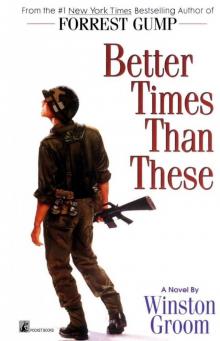 Better Times Than These
Better Times Than These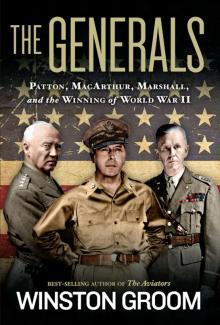 The Generals
The Generals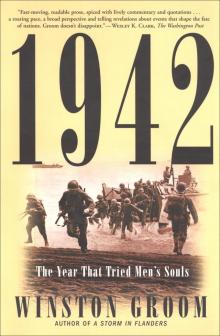 1942: The Year That Tried Men's Souls
1942: The Year That Tried Men's Souls Forrest Gump
Forrest Gump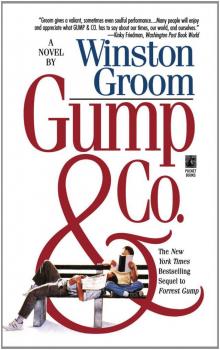 Gump and Co.
Gump and Co.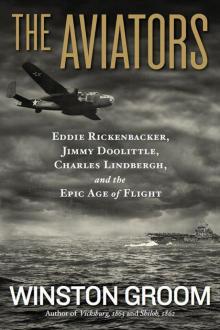 The Aviators
The Aviators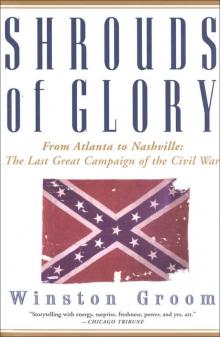 Shrouds of Glory
Shrouds of Glory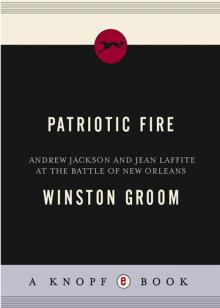 Patriotic Fire
Patriotic Fire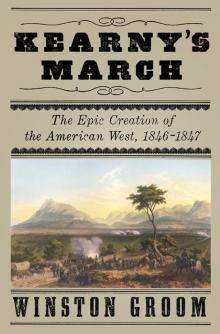 Kearny's March
Kearny's March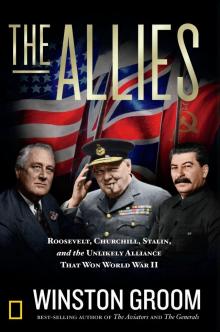 The Allies
The Allies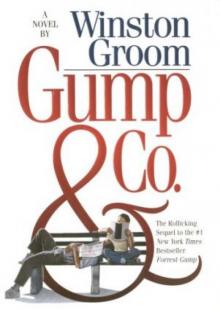 Gump & Company fg-2
Gump & Company fg-2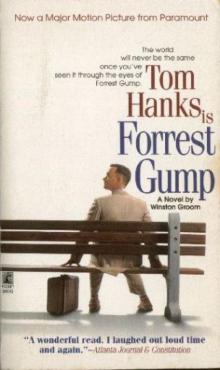 Forrest Gump fg-1
Forrest Gump fg-1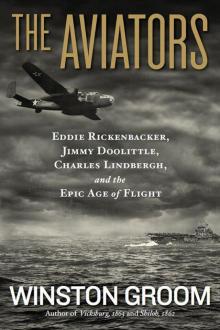 The Aviators: Eddie Rickenbacker, Jimmy Doolittle, Charles Lindbergh, and the Epic Age of Flight
The Aviators: Eddie Rickenbacker, Jimmy Doolittle, Charles Lindbergh, and the Epic Age of Flight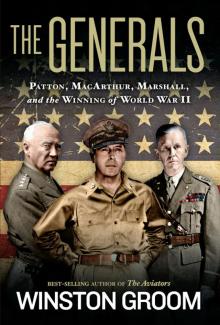 The Generals: Patton, MacArthur, Marshall, and the Winning of World War II
The Generals: Patton, MacArthur, Marshall, and the Winning of World War II